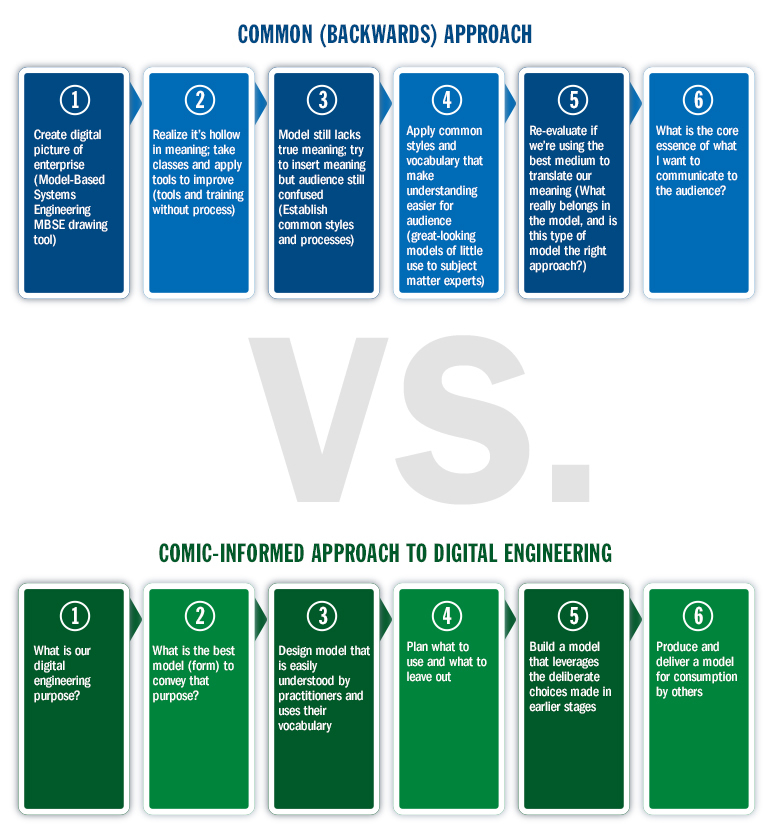 05-09-2020
05-09-2020
There is an art to the transfer of understanding, and the transfer sequence is crucial.
At its core, digital engineering helps get ideas from one mind to another mind with minimum effort and maximum integrity. That means quickly relaying a comprehensive concept.
However, that's the ideal. The reality is many organizations spend a lot of time getting concepts into some kind of model, which must be translated into another model, never quite managing to achieve common data, a common language, or the ultimate digital transformation objective.
For example, a great idea for a chair begins and needs to get to engineering and manufacturing without losing elements in translation. Time and money are spent describing the chair into the latest modeling tool.
The model is sent to engineering to make sure it is structurally sound, but engineering uses a different model and even a different vocabulary. Time is spent to get on the same page, and a new model is delivered to manufacturing, creating another model and incompatible data set.
In his book, Understanding Comics, Scott McCloud unpacks why comics work. Comics “relay a vision from the mind of the creator to the minds of an audience through a particular form,” McCloud writes, “which relies on the interplay of the creative and viewing processes.” So, this means the chair idea goes from the designer's mind to paper to engineering’s eyes and then to engineering's mind.
There is an art to the transfer of understanding in digital engineering, and the sequence of the transfer is crucial. McCloud defines a comic as a “juxtaposed pictorial and other images in deliberate sequence intended to convey information and/or to produce an aesthetic response in the viewer.”
In the transformed enterprise, juxtaposed pictorial (figures) and other images (diagrams, words, equations) drive information presentation. Digital artifacts have deliberate relationships (e.g., trace, decompose, allocate) to each other and are hyper-dimensional compared to the single dimension of a sequence.

The intent of artifacts is to convey information and produce an aesthetic response or knowledge transfer in the audience. Properly knowledge transfer needs to be deliberate.
McCloud lays out a sequence for an effective comic ending with the production and visual elements we associate with the craft. Too often organizations jump straight to this final step and work backward when trying to enact digital transformation.
Whether it is a comic or satellite constellation, skilled practitioners help translate intent into understanding.
FURTHER READING: Digital engineering is crucial for the space domain


